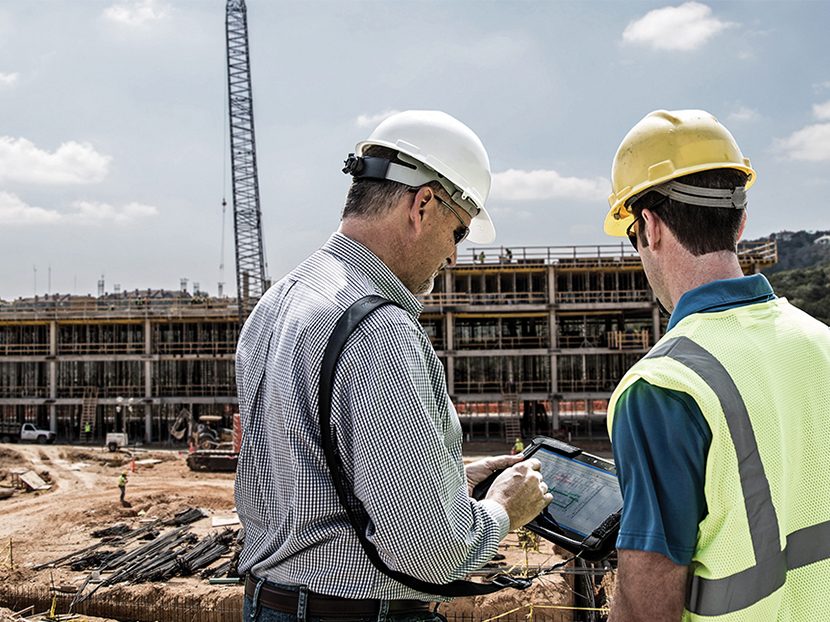2018 PHCP Industry Forecast
The future seems productive and steady.

Cautiously optimistic is the overused, safe response that many give when asked to offer insights on the state, or future state, of business. But, with a new political landscape in 2017 and the Great Recession still not a full decade passed, the predictions for business in 2018 seem a bit less trite.
Looking back at 2017, its seems the balance of wins and losses will keep the focus more on consistent growth than substantial growth. In the big picture, 2018 presents the U.S. with the possibility of an economy it has not seen in nearly a decade.
According to the independent business membership and research association, The Conference Board, the U.S. economy will witness 2.5 percent growth in 2018, which would be the best 2-year run since 2005.
The industry has seen some small and steady wins this year that should allow it to align with this prediction of a positive 2018 trajectory.
Construction
Politics played into the expectation for construction for 2018, specifically for small business and infrastructure. However, the tax reform, financial deregulation, and investments that were considered key to those changes did not manifest quite as expected. The American Institute of Architects (AIA) released its Consensus Construction Forecast recently, and predicted slow growth in construction for 2018 that will mimic the slower growth in the market at the end of 2017.
In the forecast, AIA noted industrywide concerns and specific sector weakness as key contributors to its construction market predication. For the market in general, the shortage of labor in construction being discussed by both business and consumer media at this point was pointed out. AIA additionally detailed how rising materials costs for oil-related products, metals and building commodities ultimately took a toll on firms last year.
“[Of those surveyed], a third indicated that these increases were a serious problem, and an additional 45 percent reported that they were somewhat serious. In response to this situation, architecture firms and their clients have resorted to a variety of measures, including scaling back the scope or size of projects, redesigning projects, or even putting projects on hold or dropping them entirely,” the forecast stated.
In regard to specific sectors, AIA said that the outlook on construction for 2018 will depend on the performance of retail, manufacturing, education and health care. The institute detailed how brick-and-mortars are going to have to problem-solve to stop the trend of closings, manufacturers must utilize the rise of e-commerce as an opportunity for improved production strategies, demographic decrease in demand for education will affect education projects, and the health care policy landscape will continue to inhibit investment.
Presenting a silver lining for AIA’s forecast, Lorman, an educational services entity, stated, “Despite some slight dips expected in 2018, construction demands are still going to go up around the world for both residential and non-residential building.”
On the same note of positivity, based on the product previews for the 2018 AHR Expo, it seems that cost and comfort for the end user will continue to improve next year as contractors and engineers will be supplied with upgraded tools and technology. Some to note include: radiant cooling, variable frequency drives, and motor shaft voltage and electrical testing.
PVF
The last quarter of 2017 left PVF businesses more optimistic than cautious. Deservedly so, as recent years in PVF have been marked with economic fluctuations and impediments.
According to The Wholesaler columnist, Steve Letko, in his recent quarterly forecast, “The PVF sector is upbeat in its assessment of demand and output moving forward.”
Looking at supply and demand of oil, it is anticipated that in 2018 prices will stabilize. The possibility for this not happening rests heavily on supply, as the country’s political international interactions with major areas, such as North Korea and Iran, play a major role.
Letko attributed the removal of certain political regulations; rebuilding after Hurricanes Harvey, Irma and Maria; conversion of power plants to natural gas; and the expansion and retro-fit of pipeline infrastructure as the key causes for increasing demand for PVF products.
Natural gas has also been a contributor to the PVF industry’s hopefulness. The conversion of power generation to natural gas is generating global demand for liquid natural gas. Abundance of shale gas in U.S. oil shales and growing air pollution regulations are key contributors to increased demand for liquid natural gas.
“The demand has generated the need for the construction of new pipelines to transport the media from production to market,” Letko says.
Kitchen & Bath
While DIY has been an outcome of economic recession that the kitchen & bath industry has had to navigate for a while, it seems end users returned back to the pros in 2017 and will continue on this trend next year. Twice a year, Delta Faucet releases its Homeowner Index. The index tracks renovation, design and purchase habits and investigates key insights related to the home. The recently released index brought good news for remodeling.
According to the report:
- 85 percent of parents would rather receive the gift of a free kitchen upgrade this holiday season than free babysitting every weekend for a year
- On average, homeowners would be willing to spend $13,500 to remodel their entire kitchen
Since the middle of the year, experts, such as Leading Indicator of Remodeling Activity (LIRA), have predicted that the remodeling market would continue to grow above its long-term average through 2018 thanks to an overall stronger housing market.
The Kitchen & Bath Industry Show (KBIS) will kick off the New Year as it does annually, and its host The National Kitchen & Bath Association (NKBA) has been busy releasing product and design trends and innovations to anticipate at the show.
One focus in the world of fixtures for 2018 will be brass. Making a slow but steady comeback over the past few years, it is expected that next year homeowners will be requesting this precious metal to add luxury to their homes.
In her November column in The Wholesaler, Linda Jennings said, “Not since the heyday of the 90s has brass been so prevalent in interior design. It’s literally everywhere, with a golden sheen catching the light and creating a buzz among leading designers and customers in our industry. While brass is the metal of the moment, today’s brass is an intriguing interpretation of a retro style that is fresh and modern, yet still classic and elegant. Brass is back, and in a big way!”
Brass is making a big comeback, but stainless will still be the main contender in 2018. According to Delta Faucet’s index, 53 percent of the homeowners surveyed preferred stainless steel as the finish of choice in the kitchen.
While some trends are remaining the same in kitchen & bath, there is one that is not: Granite. Amanda Gates, of Gates Interior, discovered on the KBIS Blog tour that the granite frenzy is coming to an end. She predicted that the replacement will be quartz.
“It’s the number one product on the market right now. It’s durable, has incredible finish options and it’s fresh,” Gates said.
Other trends that will be showcased at KBIS 2018 include two-tone cabinets, all things blue, stone sinks, and custom doors.
Technology
Building automation. System controls and integration. Wi-Fi. These are the buzz words that have dominated the industry’s technology discussions in recent years. It seems though that 2018 will be the year of helping the pro at work when it comes technology.
Virtual reality and augmented reality are slowly being incorporated in daily work life across all industries, ranging from surgeons practicing procedures to determine success rates in advance to NFL football players walking back through games and practices as if they are on the field. In the worlds of real estate and construction, this technology gained popularity as an end user tool for customization. Moving forward, the technology will be used to help companies visualize projects in advance.
ConstructConnect’s Kendall Jones wrote, “It’s a big step up from viewing a 3D BIM model on the screen of a laptop or tablet. Virtual reality allows a user to immerse themselves inside a full-scale 3D virtual environment and interact with the design just like they would in the real world.”
Wearables will also transform the industry’s workspace. Lorman reported that the technology will help track how laborers work, ultimately providing metrics and monitoring that will help offset costs. Lorman said metrics will play a major role in the workplace safety space as well in 2018. Mobile apps, specifically, will help relay information to and from work sites in order to increase safety measures and reduce injuries.
The theme for 2018 seems to be continued growth. While gains may remain small, they will be gains nonetheless. Maybe the new go-to phrase for forecasts and predictions will become, “moderately expectant.”





